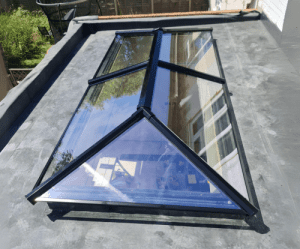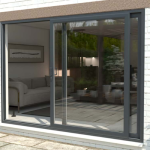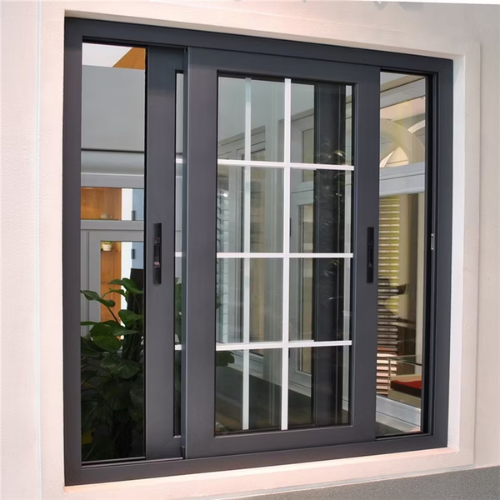Walk any London street on a frosty morning and you can tell which homes lose heat. The sash panes mist, the radiators thump, and you can feel the draft as you pass a letterbox. For homeowners, the question isn’t whether to upgrade. It’s how to do it sensibly, so the house feels warmer, costs less to run, and holds its value. Aluminium windows sit at the center of that decision. They combine sleek sightlines with durable frames, but the real story is energy. Get the specification right and you cut bills for decades. Get it wrong and you lock in avoidable heat loss.
When people type aluminium windows near me, they’re usually balancing aesthetics against performance and cost. I’ve sat at kitchen tables with families who loved the skinny frames, only to worry about condensation. I’ve advised architects who wanted floor-to-ceiling glazing without the carbon penalty. The common thread is this: successful window projects begin with clarity about thermal targets, exposure, and use. The rest follows.
What makes aluminium a smart choice for energy efficiency
Aluminium earned its place in modern builds because it’s strong, stable, and endlessly recyclable. That strength lets you use slender frames that hold large, insulated glass units without chunky mullions. The frame is only part of the energy picture though. Raw aluminium conducts heat readily, so older units felt cold at the touch and bled warmth. Contemporary profiles address that with thermal breaks, essentially a non-conductive barrier between inner and outer sections of the frame. The difference in performance is not subtle. A good thermally broken system can achieve window U-values of 1.2 to 1.4 W/m²K with double glazing, and below 1.0 W/m²K with high-spec triple glazing. Those numbers translate into real comfort on a January night.
Glass specification matters just as much. Low-e coatings reflect heat back into the room, warm-edge spacers limit heat bridging at the perimeter, and a gas fill such as argon improves the insulating gap. The most efficient units combine these elements into a whole system. I’ve tested samples on site with infrared cameras: the change from basic double glazing to a high-quality, low-e argon unit cuts visible heat loss in the image by a wide margin. People notice that as a steadier indoor temperature and fewer cold downdrafts.
Design flexibility is the other advantage. With aluminium’s strength, you can run sliding doors three meters wide per panel, add clerestory windows above a kitchen, or fit narrow frames in a Victorian terrace without shouting about it. When the brief includes more natural light and higher energy savings, that strength-to-weight ratio pays for itself.
Energy efficiency, London-style
Weather shapes performance. In London, winters are damp and cool rather than brutally cold, which means drafts and condensation often matter more than extreme heat retention. Homes in the city tend to deal with traffic noise, pollution, and limited facade area. Window choice has to be specific.
On several projects in Hackney and Hammersmith, we aimed for a whole-window U-value around 1.2 W/m²K with robust air tightness. That combination delivered lower bills and much better acoustic performance without resorting to triple glazing everywhere. We reserved triple glazing for bedrooms facing busy roads or north elevations that stayed cold. South-facing rooms used high solar gain glass in moderation to harvest winter sun, then relied on shading to prevent summer overheating. This is the nuance that online spec sheets don’t capture. A home isn’t a lab. You want the fabric to respond intelligently to the way you live.
If you’re searching aluminium windows near me because your Victorian sashes rattle, or your 1970s casements leak, a measured survey is worth the time. An installer who works often in your borough knows how cabling, lintels, and masonry vary between estates, and will spot pitfalls like irregular reveals or weak cills. I’ve seen too many jobs lose time because the new frame depth clashed with internal shutters or the trickle vents lined up with a structural member.
Framing performance: what to ask before you buy
Good aluminium, badly specified, is a missed opportunity. Get specific with your questions and you’ll separate competent providers from the rest. Here’s a short checklist you can use during consultations.
- Whole-window U-value, not just the glass: ask for the Uw figure at your exact sizes. Thermal break technology: confirm the type and thickness, and whether the frame uses polyamide strips or advanced materials. Air and water tightness: request test classifications for air permeability, watertightness, and wind resistance. Glazing configuration: low-e coatings, gas fill, spacer type, and thickness relevant to your exposure and noise needs. Installation details: how they’ll seal to the wall, handle trickle ventilation, and avoid thermal bridges at cills and heads.
I keep this list short on purpose. You want clear answers you can compare between firms. If someone dodges the whole-window U-value, that’s a red flag. Similarly, if the installer glosses over sealing and tapes, expect drafts. The frame and glass only perform to spec when the junctions are built properly.
The condensation conversation no one likes to have
Every winter I get a call that starts with, “The new windows are great, but there’s moisture on the frames.” Condensation has three parents: indoor humidity, cold surfaces, and poor air movement. Aluminium windows with good thermal breaks run much warmer inside than older versions, so you reduce the risk. Still, if a family dries laundry indoors and cooks without extraction, even excellent windows can mist up.
We deal with this in three ways. First, we set expectations at the design stage, choosing frames with deep thermal breaks and warm-edge spacers. Then, we plan ventilation, whether through mechanical ventilation with heat recovery, effective kitchen and bath extraction, or discreet trickle vents when appropriate. Finally, we talk habits. Ten minutes of window purge ventilation after showers or a stew can make a difference. In one Southwark flat we upgraded, swapping the hob fan and adding an MVHR later, alongside the aluminium frames, brought internal humidity down from 70 percent to under 50 percent on winter evenings. The glass stayed clear. People underestimate how much comfort depends on airflow, not just insulation.
Double glazing versus triple glazing, and when to choose each
The triple glazing question has no universal answer. In London’s climate, well-specified double glazing in a thermally broken aluminium frame often hits the sweet spot of performance, cost, and weight. Triple glazing adds thermal margin and can improve acoustic damping, but it costs more and stresses hinges and fixings with additional mass. On a project in Finchley, triple glazing made sense for a nursery facing the North Circular. In a rear kitchen with a garden view, we stayed with double glazing, kept the frames slim, and invested in external shading to avoid summer stuffiness. That mix delivered a comfortable, efficient home without overspending on glass where it wasn’t needed.
If you’re on a tight budget, choose fewer, bigger improvements over many, average ones. Better frames with quality double glazing, properly installed, outperform mediocre triple glazing in a leaky surround. Performance is systemic.
Sliding, casement, tilt and turn, or fixed: form meets function
Style choices affect energy in subtle ways. Sliding doors can be highly efficient today, but they require precise installation and excellent gaskets to maintain air tightness. Tilt and turn windows, common in continental builds, compress seals evenly and tend to have strong air and water ratings. Casements can be great when they close against the frame with a firm seal and use multi-point locking. Fixed panes are champions for efficiency, since no moving parts means fewer leakage paths. I often design a rhythm that uses fixed panes for views and light, then pairs them with opening sections sized for purge ventilation and day-to-day airflow. It’s not merely a look. It’s a strategy to move air when you want to, then lock the thermal envelope tight the rest of the time.
The installation is half the performance
Most homeowners focus on the frame and glass, yet the junction between the window and the wall is where energy savings are won or lost. Warm frames installed with cold bridges around the perimeter behave like a good coat with no scarf. I insist on three things during installation. We use expanding tapes or membranes that maintain a continuous air and moisture seal. We pack the cavity thoroughly to avoid voids that become cold spots and acoustic leaks. We align frames carefully in the reveal to minimize exposure and allow the internal plaster or trim to meet flush. On a Notting Hill mews, these details cut whistling drafts and drumming rainfall noises that the previous owner thought were inherent to the building. They weren’t.
If you’re comparing offers for Aluminium Windows in London, don’t skim the section on installation materials and methods. It is the difference between a window that tests well in the factory and a window that performs in your living room.

Cost, value, and payback
Energy-efficient aluminium windows aren’t cheap. The upfront cost per square meter varies by profile, finish, and glazing, but a well-specified system with installation often lands between mid and high four figures for a typical three-bed terrace’s full set. The payback calculation depends on your current windows, energy prices, and how long you’ll stay. I advise clients to look beyond a strict payback window and consider three layers of value.
There’s the obvious reduction in heating costs, which for a leaky home upgraded to Uw around 1.2 can be substantial. There’s comfort, which no spreadsheet captures well. Even heat, fewer drafts, quiet interiors, and clear views during wet weather change how you use a space. Finally, there’s capital value. Buyers in London increasingly factor EPC ratings and visible build quality into offers. I’ve watched homes jump a band by pairing aluminium windows with loft and cavity improvements. The listing photographs tell the story before the surveyor arrives.
Finishes, maintenance, and longevity
Powder-coated aluminium finishes last a long time when done right. I like matte or satin textures, which hide fingerprints and look refined on period and contemporary facades. Dark frames frame the view, but they absorb solar gain on exposed elevations. Lighter colors stay cooler, which can slightly reduce expansion and movement in intense sun. That matters for very large sliders.

Maintenance is modest. Clean the frames with mild soap, keep drainage ports clear, and lubricate moving parts annually. I set my clients a reminder each spring. In coastal or heavy pollution zones, rinse dust and salt more often. Anodized finishes offer a different look and hard-wearing surface, but they are less forgiving of site scratches. If you’re mixing Aluminium Doors in London with window frames, order finishes from the same batch to ensure color consistency. I’ve seen slight differences under certain lights when orders were split across months.
Where local expertise pays off
Search results for aluminium windows near me will give you pages of national brands and small specialists. Both have a place. National firms bring scale, and sometimes price. Local specialists bring site knowledge and flexibility. I’ve had excellent experiences with teams who measure twice, ask about your ventilation and shading, and suggest tweaks that live better. For example, swapping a large single slider for a two-panel tilt and turn plus fixed combination improved both air flow and thermal continuity on a narrow facade in Walthamstow, with a cleaner line from the street.
If you’re considering a provider, ask where they source their profiles and what hardware they use. Many respected installers, including companies like Durajoin Aluminium Windows and Doors, work with proven systems that have published test data. The name on the van matters less than the specification sheet and the people who will be Durajoin Aluminium Windows and Doors in London on your scaffold. Speak with past clients and, if possible, visit a recent install. You’ll learn more from twenty minutes in a finished home than from any brochure.
Planning, heritage, and sightlines
London’s planning context can shape your options. Conservation areas may require like-for-like sightlines, and certain terraces frown on visible trickle vents or glossy finishes. Aluminium can still work. Slim thermally broken sash-look windows and putty-line casements are available and perform well when specified carefully. On a listed townhouse in Islington, we paired slender aluminium frames on the rear extension with timber replacements on the front elevation to satisfy planning, then aligned the internal reveals so the transition felt natural. Performance on the extension was superb, and the street view remained authentic.
Sightlines deserve attention even when planning is relaxed. A few millimeters in mullion width can change how a room feels. I keep cardboard templates in the car for this reason. We hold them up against the view, compare to the current frame, and decide. It’s low-tech and it works.
Solar gain and summer strategy
Energy efficiency is not just about trapping heat. London summers have become hotter, and glass that saves energy in winter can overheat rooms in July if unmanaged. When choosing Aluminium Windows in London, look at the g-value of the glass. On south or west elevations without shading, consider lower solar gain coatings. For deep rooms where winter sun helps, keep the g-value higher and add external shading for summer. I’ve used simple sliding screens, deciduous planting, and brise-soleil to keep kitchens comfortable. Internal blinds help glare but do little to stop heat entering the room. The best strategy is to intercept sun before it reaches the glass or to ventilate effectively when the outside air is cooler.
Security without spoiling the line
Modern aluminium systems integrate multi-point locking, laminated glass, and concealed hinges that maintain a clean look. If you’re upgrading patio doors, specify toughened or laminated glass on lower panes and consider cylinder guards on handles. Ask for PAS 24 compliance where relevant. Security films can add a margin against forced entry and reduce UV fading on furnishings. I’ve stood with homeowners after attempted break-ins and watched them relax as we reviewed how a laminated pane held together even after impact. Peace of mind belongs in the energy conversation too, because a secure home is a home you ventilate confidently and use fully.
A simple path to a smart decision
The choice to go with aluminium should feel like an informed upgrade, not a gamble. Start by mapping your priorities. List the rooms that feel cold or loud, note which facades overheat, and gather a few energy bills. With that clarity, meet two or three reputable installers who work regularly in your area. Bring the same questions to each meeting and ask for whole-window U-values, air tightness ratings, and installation details in writing. Compare glass options by elevation, not just by price. Insist on a site-specific survey and discuss how frames will interface with your walls and finishes. If a provider like Durajoin Aluminium Windows and Doors offers to show you a recent installation, take the visit. Ten minutes with a tape measure and your own eyes will beat a stack of PDFs.
Finally, think about phasing. If the budget won’t stretch to the entire house, prioritize the worst-performing rooms or the elevations where you spend the most time. Pair the upgrade with targeted insulation and ventilation improvements. A balanced system makes each component work harder for you.

A few real-world lessons from recent projects
A detached home in Barnet swapped tired uPVC for slimline aluminium with double glazing on the living areas and triple glazing on bedrooms facing the street. We tightened air leakage with tapes and insulated reveals. The family reported a two-degree improvement in evening temperatures at the same thermostat setting and turned the heating down by a notch. Street noise dropped noticeably in the nursery. They kept their south-facing living room bright and comfortable with light external shading and a mid-g glass.
A ground-floor flat in Lewisham dealt with condensation for years. We installed thermally broken frames with warm-edge spacers and replaced a failing extractor. The owner changed a habit or two, aired the flat after showers, and used the kitchen fan during cooking. Condensation complaints ended, and the bedroom felt less clammy. Small changes, big effect.
A terrace in Shepherd’s Bush wanted a seamless, modern rear elevation. We used large aluminium sliders paired with fixed panes and designed a careful step in the brick opening to shelter the head from wind-driven rain. The test day was a storm. Inside, the sliders were quiet, the seals held, and the room stayed warm without drafts. The owners love the sightlines, but what they mention most is how still the space feels on blustery evenings.
The search, the shortlist, and the payoff
Typing aluminium windows near me is a starting line, not a finish. The finish is a home that feels steady and quiet, a space where winter mornings don’t chase you toward the kettle and summer afternoons stay manageable. Aluminium, done right, is a tool to get you there. It offers strength, slender beauty, and a platform for serious thermal performance. Pair it with honest advice, exact install work, and glass tailored to each facade, and you bank years of lower bills and higher comfort.
If you’re in the capital, you’ll find plenty of options for Aluminium Windows in London and matching Aluminium Doors in London. Look for clear data, real references, and people who talk as much about tapes and trims as about gloss finishes. If a provider like Durajoin Aluminium Windows and Doors is on your shortlist, ask to see a project that resembles yours, not just a showroom door. The difference between a good decision and a great one is usually found on site, at the details you can touch.
The reward for diligence is tangible. Rooms lose the rollercoaster of hot and cold. Windows stop being weak spots and become assets you’re proud to live with. And when the first cold snap arrives, you’ll notice something satisfying: the radiators whisper, the thermostat rests, and the glass stays clear. That’s energy efficiency you can feel every day.